Edelweiss Balanced Advantage Fund
Date Published: August 04, 2023
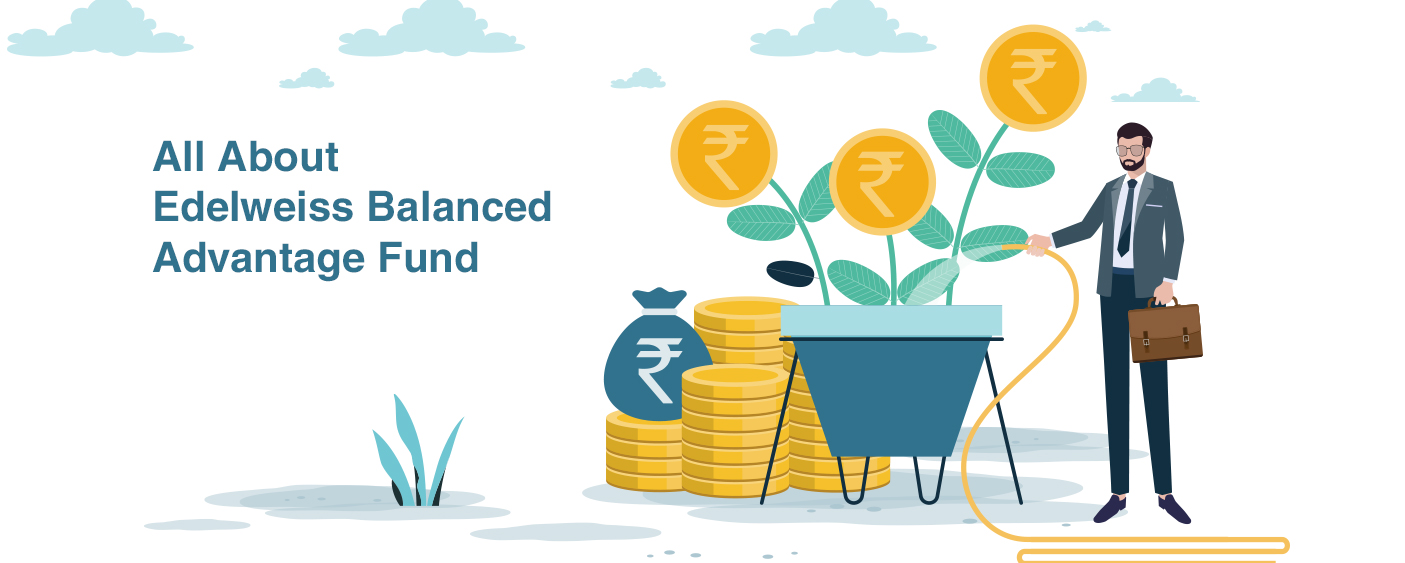
| FUND FACTS | ||||
| Nature | Open Ended | Fund Manager | Bharat Lahoti, Bhavesh Jain, Rahul Dedhia | |
| Inception Date | 20-Aug-2009 | Benchmark Index | Nifty 50 Hybrid composite debt 50:50 Index* | |
| NAV (Rs.) | 38.08 ( 31-May-2023 ) | Corpus (Rs.in Crs.) | 9077.99 ( May-2023 ) | |
| Investment Objective | The primary objective of the Scheme is to generate capital appreciation with relatively lower volatility over a longer tenure of time. The Scheme will accordingly invest in equities, arbitrage opportunities and derivative strategies on the one hand and debt and money market instruments on the other. The Scheme may also invest in Infrastructure Investment Trusts and Real Estate Investment Trusts. However there is no assurance that the investment objective of the Scheme will be realized. | |||
PORTFOLIO COMPOSITION
The fund has 77.11% of its net assets invested into equity & equity related instruments, balance 16.43% in debt component and 6.46% in others. The large cap holdings constitute of 60.99% (market cap > Rs.48,898 crs), 10.68% in midcap (market cap > Rs.16,814 and < Rs.48,898 crs), 3.96% in smallcap (market cap 0 < Rs.16,814 crs) and balance 24.37% in debt and other component. The top 10 holdings of the scheme constitute 34.62% of its net assets. It may be observed that the Quarterly Average AUM of the fund for the end of March 2023 is Rs.7254.33 crores.
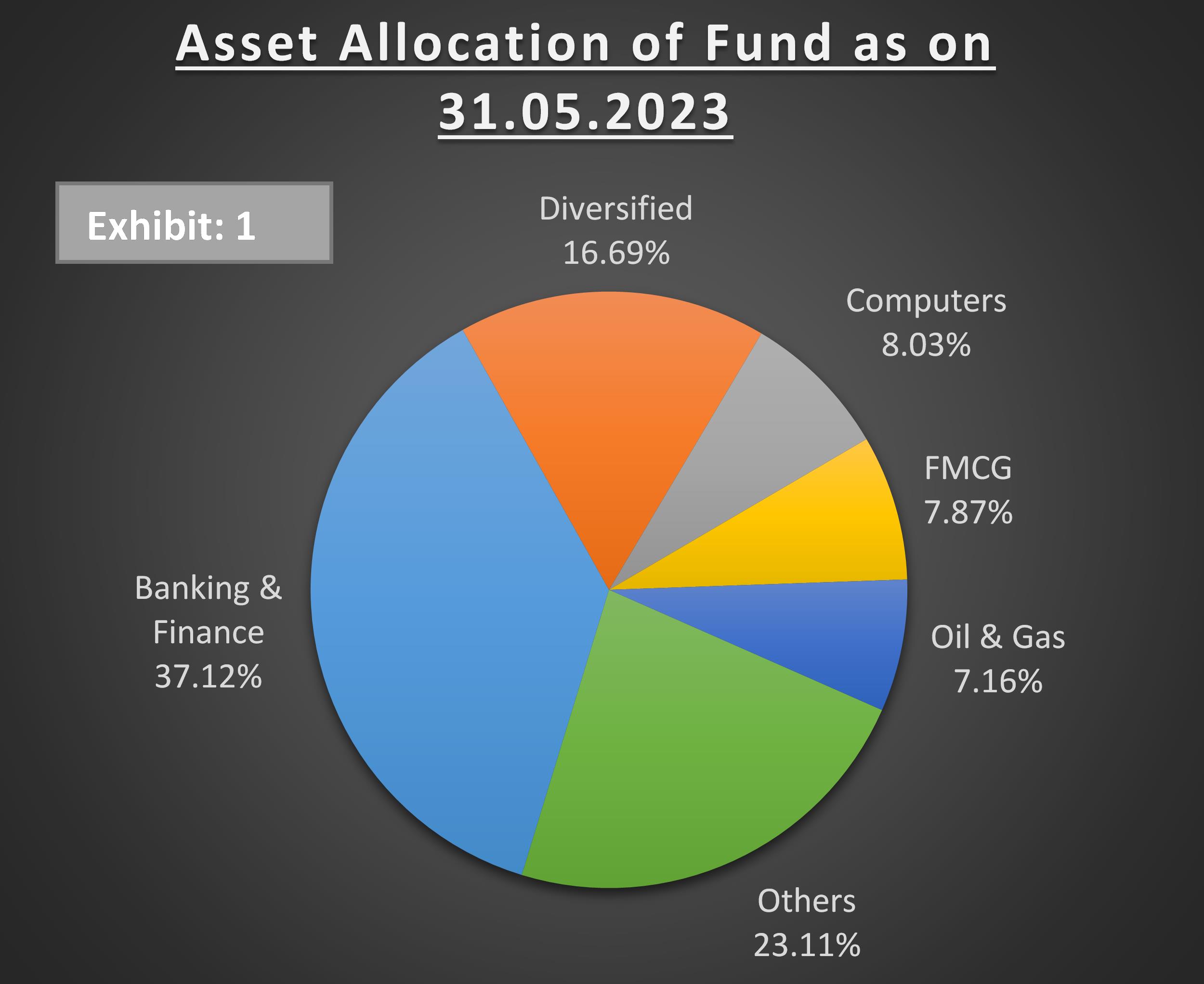
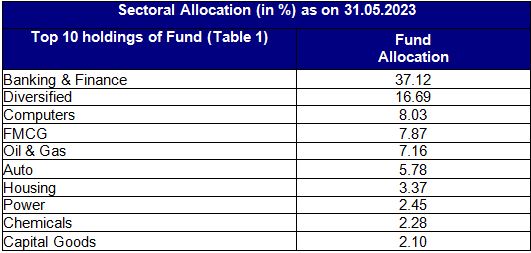
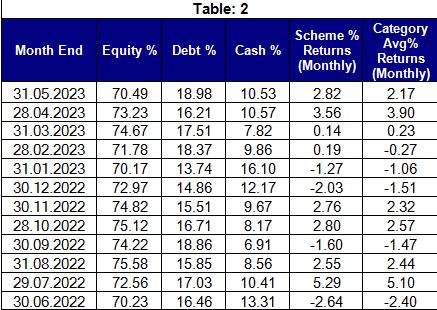
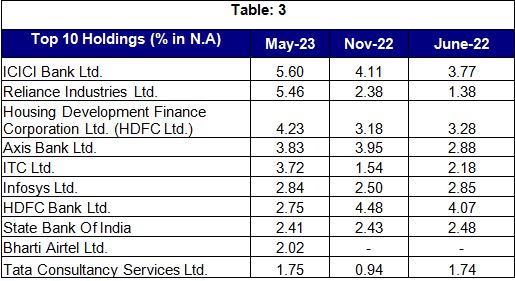
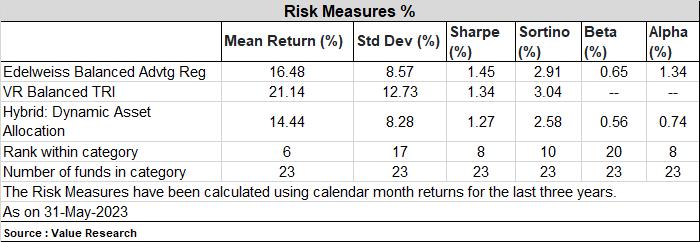
PORTFOLIO ANALYSIS
A dynamic asset allocation fund is more popularly known as a balanced advantage fund. A balanced advantage fund is a type of hybrid fund. It invests in debt, equity and arbitrage positions although the allocation is not fixed and can also sit on cash if the fund manager desires so. Unlike other hybrid funds like multi asset, aggressive and conservative, a dynamic asset allocation or a balanced fund does not have a fixed mandate to follow. The fund manager can move across different asset classes based on the prevailing market conditions. The importance of a balanced fund is more felt during a bearish market phase since it can cut down its equity portion and at the same time make periodic equity purchases in the dip. This is unlike other pure equity funds who at all times have to maintain their mandate irrespective of the market situation.
Table 1 above tabulates the allocation of top 10 sectors by the fund. The fund has an allocation to 16 sectors, wherein the top 5 sectors constitutes to 76.88%. The fund could outperform its benchmark index in 06 out of 12 months during the last one year period, maintaining an average equity exposure of 72.99%.
The risk parameter graph measures standard deviation (S.D.) across all the Balanced Advantage schemes. The S.D. of the scheme is 8.57%, which is higher than the industry average of the Balanced Advantage schemes of 8.28%. The Sharpe ratio of the scheme is 1.45%, which is higher than the industry average 1.27%.
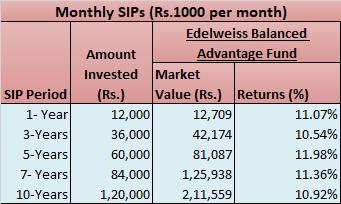
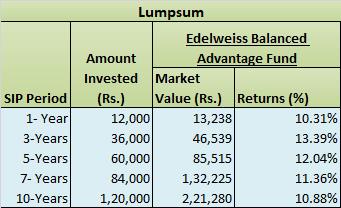
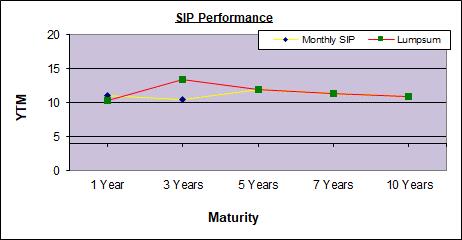
Note: (1) Performance is on May 31, 2023. (2) Returns are calculated on the basis of annual compounding. As it may be observed in Exhibit 2, the fund has outperformed in returns vis-à-vis its benchmark across all time frames. The returns of the fund in both modes (ie. Monthly and Lumpsum) across various time periods witnessed with mixed noticeable variations.

PERFORMANCE
In Exhibit 4, the scheme has outperformed its category average in all time horizons except for 6 month horizon. Balanced Advantage Funds, also known as Dynamic asset allocation funds are a category of mutual fund schemes where the fund manager has a flexibility to heavily move the exposure between debt, equity & arbitrage. Unlike aggressive hybrid funds where the equity exposure has to be a minimum of 65% of the portfolio, balanced advantage funds move the exposure dynamically from 30%-80% in equity depending upon the market conditions. It follows an in house model called Edelweiss Equity Health Index (EEHI). The EEHI model is a pro cyclical asset allocation model based on both, quantitative factors as well as fundamentals
Edelweiss Balanced Advantage Fund scheme's ability to deliver returns consistently is in-line with most funds of its category. Its ability to control losses in a falling market is average.
Please Note: The ratings mentioned in the report are declared by Value Research
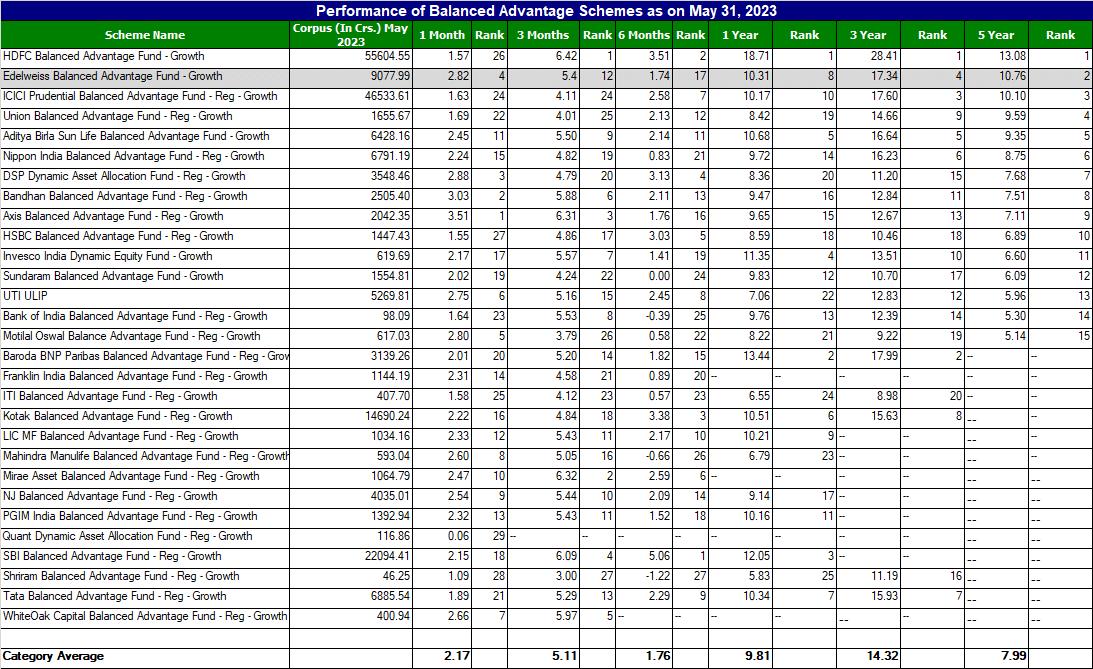
Start your Investment journey with us
Disclaimer - Mutual Fund investments are subject to market risks, read all scheme related documents carefully.